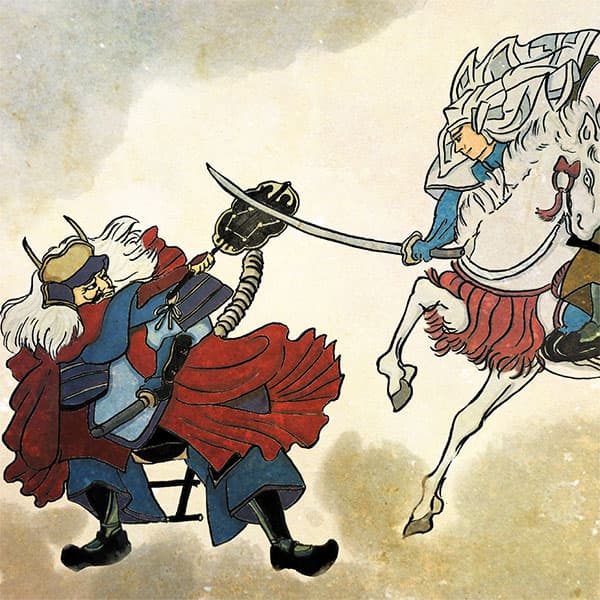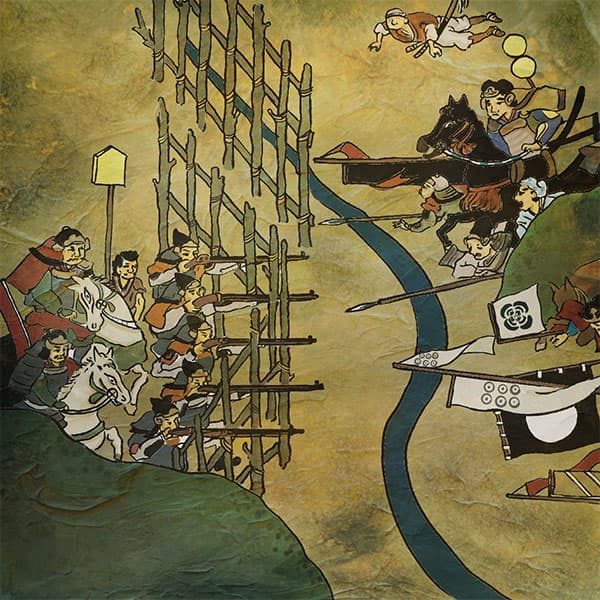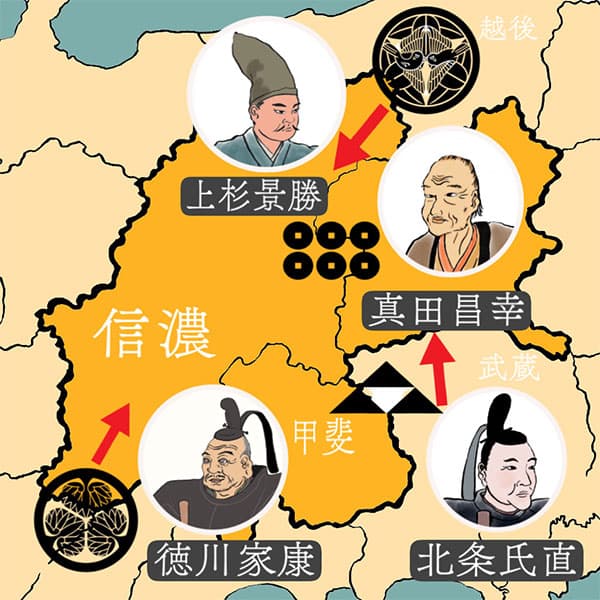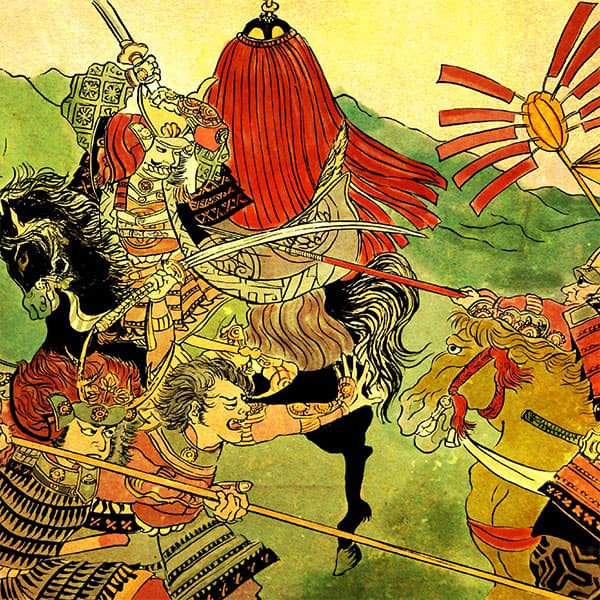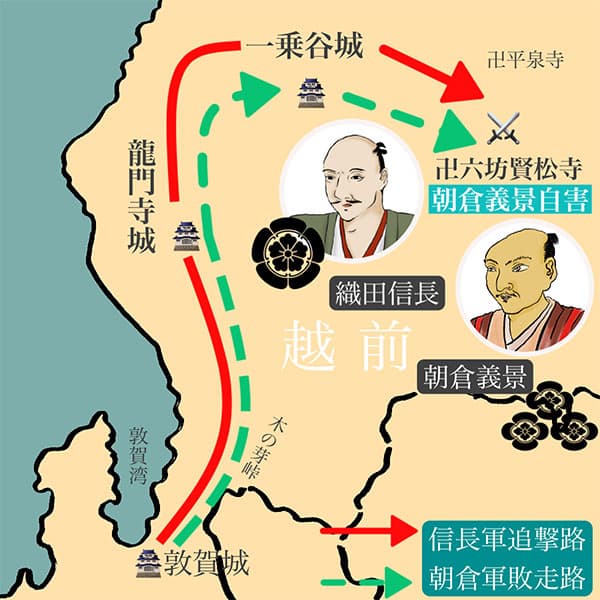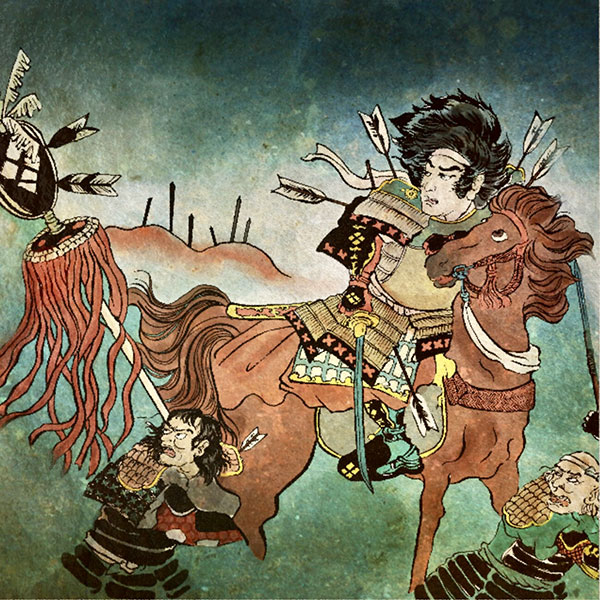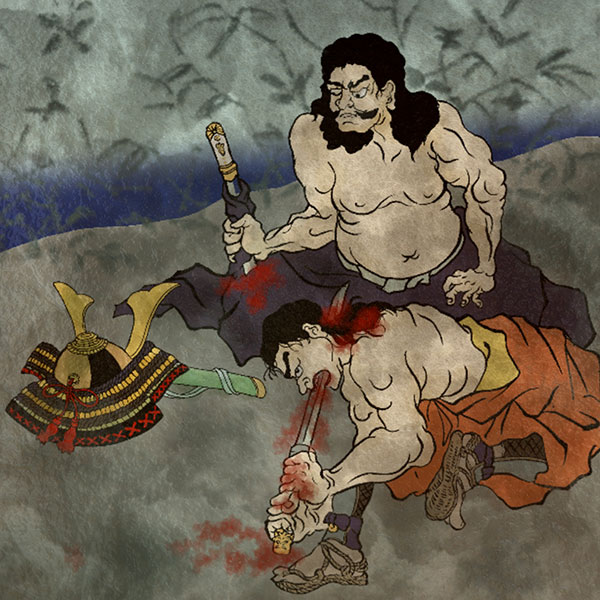Takeda Shingen (1/2)Kai Tiger raising the flag of Fuurinkazan
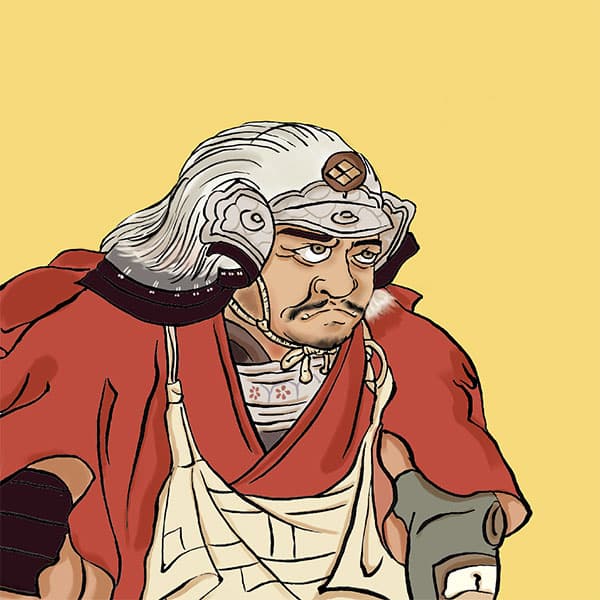
Takeda Shingen
- Article category
- biography
- name
- Takeda Shingen (1521-1573)
- place of birth
- Yamanashi Prefecture
- Related castles, temples and shrines

Kofu Castle

Tsuchigasakikan

Odawara Castle
- related incident
Throughout the Sengoku period, Tokugawa Ieyasu unified Japan and established the Edo shogunate.
The person whom Ieyasu fought and lost, and whom he respected, was Harunobu Takeda of Kai (present-day Yamanashi Prefecture) (who later became a priest and took the name Takeda Shingen).
Oda Nobunaga, who along with Ieyasu is considered one of the three great heroes of the Sengoku period, also took pains to avoid conflict with Harunobu as much as possible.
This time I would like to introduce Takeda Shingen, who was feared by the heroes representing the Sengoku period.
Birth of Harunobu Takeda
Takeda Shingen was born on November 3, 1520, as the son of Takeda Nobutora, the shugo of Kai Province. He had an older brother when he was born, but he died young, so Shingen became the eldest son.
In 1525, his younger brother Jiro (later Nobushige Takeda) was born.
However, his father Nobutora's affections shifted to his younger brother, and it is said that he gradually began to dislike Shingen.
Nobutora continued to fight on the border with the Hojo clan (Gohojo clan), which had risen in the Kanto region. As a result of this relationship, in 1533, Shingen's daughter (Uesugi) was welcomed by Tomoaki Uesugi, the head of the Uesugi family in Ogidani, who was in conflict with Hojo, as Shingen's legal wife.
However, in 1534, Uesugi had a difficult time giving birth, and both Uesugi and her child died.
In March 1536, he received the epithet ``Haru'' from Yoshiharu Ashikaga, the 12th shogun of the Muromachi shogunate, and changed his name from his childhood name ``Taro'' to ``Harunobu.'' He was given the official rank of Junior Fifth Rank Lower and Daizen Daifu.
After the coming of age, the temple welcomed Mrs. Sanjo, the daughter of the Minister of the Left, Kimiyori Sanjo.
Nobutora Takeda allied with Kokujinshu from Shinano (present-day Nagano Prefecture), such as the Suwa clan and the Murakami clan, and proceeded to invade Saku County, Shinano Province. It is believed that Takeda Shingen's first battle was in November 1536, when he attacked Genshin Hiraga, the lord of Uminokuchi Castle in Saku District.
Shingen served in Nobutora's invasion of Shinano in 1541, and also participated in the Battle of Unodaira. However, in June of the same year, after returning to Kofu after the Battle of Shinano, Nobutora was banished from Suruga after discussions with senior vassals such as Nobukata Itagaki, Torayasu Amari, and Toramasa Iitomi.
When Nobutora returned triumphantly from Shinano Province and went to Suruga Province to meet his son-in-law, Yoshimoto Imagawa, Shingen closed the border. Nobutora was unable to return to Kai, lived under Yoshimoto Imagawa, and then moved to Kyoto.
However, the truth seems to be that Harunobu did not simply kick him out, but that he consulted with Yoshimoto Imagawa and both of them were looking after Nobutora's life, so he forced him to retire.
Reasons for this include Nobutora doting on his younger brother Nobushige more than Shingen and plotting to disinherit Shingen (abandoning his right to inherit the family headship), and poor relations with his vassals. It is thought that the cause is poor interpersonal relationships.
In this way, Takeda Shingen became the 19th head of the Kai Takeda family.
Shingen after taking over as head of the family
In 1541, Takeda Shingen took over the Takeda family at the age of 20.
Shingen's father, Nobutora, was in conflict only with the Hojo family (Gohojo family) of Sagami Province (present-day western Kanagawa Prefecture), and mainly with the small prefectures of the Toshin region of Shinano Province (present-day Aoki, Nagano Prefecture). Town, Nagawa Town) and other areas were in the process of being conquered. After taking the headship of the family from Nobutora, Shingen changed course and began an invasion from Suwa (present-day Suwa City, Nagano Prefecture) in the Nanshin region of Shinano Province.
It took about four years to capture Suwa and Ina in the Nanshin region, and in 1544 he made peace with the Hojo family, which had been in conflict with him. When there was a conflict between the Hojo family and the Imagawa family in Suruga Province (present-day eastern Shizuoka Prefecture), he demonstrated his diplomatic skills by mediating and stabilizing relations with neighboring countries.
After establishing good relations with the surrounding countries, they began a full-scale invasion of Shinshu.
He faced Nagatoki Ogasawara, the governor of Shinano, and Yoshikiyo Murakami, the lord of a small prefecture. Murakami Kiyoaki lost many soldiers, including Nobukata Itagaki and Torayasu Amari, who supported Takeda Harunobu in the Battle of Uedawara and the whetstone collapse, and Shingen himself was injured.
However, after about 10 years of invasions, in 1553, Murakami Yoshikiyo fled to Echigo (present-day Niigata Prefecture) to the lord of the country, Kagetora Nagao (later Uesugi Kenshin). In this way, the Toshin region also came under the control of the Takeda family, and Shingen subdued most of Shinano except for the Hokushin region.
Takeda Shingen's rival Uesugi Kenshin
The military commanders of Shinshu, including Yoshikiyo Murakami, who were pursued by Takeda Shingen, relied on Kagetora Nagao (later Kenshin Uesugi).
He was born to Tamekage Nagao, the governor of Echigo, and was 10 years younger than Shingen. He was considered one of the best warriors during the Sengoku period, and in addition to unifying Echigo, he frequently dispatched troops to the Kanto region, the northern part of Shinshu (present-day Nagano prefecture), and the Hokuriku region (west of Etchu Chugoku), and was known as the "God of War" due to his impressive military achievements. It is also known as the ``Dragon of Echigo.''
Norimasa Uesugi, Kanto Kanrei, who was chased by the Hojo family of Sagami and fled to Echigo, relies on Kagetora. Kagetora was adopted by Kensei, was given the headship of the Yamauchi-Uesugi clan, and took over Kanto Kanrei, an important position in the Muromachi shogunate. He changed his surname from the Nagao family to the Uesugi family, and when he became Kanrei, he went on an expedition from Echigo to the Kanto region and fought with the Hojo family.
Also, when Takeda Shingen invaded Shinano, the Ogasawara and Murakami families, who were forced out of their territories, relied on Kagetora. In response to the requests of these people, Kagetora set out from Echigo to confront Harunobu Takeda in order to take back Shinano.
Battle of Kawanakajima
The Battle of Kawanakajima was a battle between Takeda Shingen and Uesugi Kagetora for control of Kita-Shinano (northern Nagano Prefecture).
The Battle of Kawanakajima was fought a total of five times. The most famous battle was the fourth battle that took place in 1561.
The 4th battle is thought to have taken place on Kawanakajima (currently the southern suburbs of Nagano City, Nagano Prefecture), a triangular flat area where the Chikuma River and the Saigawa River meet, and the main battleground was Hachimanbara Historical Park (also known as the Kawanakajima Battlefield). It is said that
Kagetora goes to Kyoto and has an audience with the shogun Yoshiteru Ashikaga.
There, he was officially allowed to assume the post of Kanto Kanrei. In the 3rd year of Eiroku (1560), Kagetora, who had found a good cause, went to the Kanto region. Many of the feudal lords of the Kanto region sided with Kagetora, and his army swelled to 100,000. To avoid a decisive battle, Hojo Ujiyasu confined himself to Odawara Castle (Odawara City, Kanagawa Prefecture). (Battle of Odawara Castle).
Ujiyasu Hojo, who was in crisis, requested assistance from his ally Takeda Shingen, who responded by invading northern Shinano. He built Kaizu Castle (Matsushiro Town, Nagano City, Nagano Prefecture) on Kawanakajima and threatened Echigo, which had become weak due to Kagetora's absence. Eventually, some of the Kanto generals withdrew their troops without permission, and Kagetora lifted the siege of Odawara Castle.
For Kagetora, who was aiming to conquer the Kanto region, it was an urgent task to solidify the borders between Shinano and Echigo in his rear.
In August of the 4th year of Eiroku, Kagetora set out from Echigo Province, passed through Zenkoji Temple, and set up camp on Mt. In response, Takeda Shingen entered Kaizu Castle and faced off against the enemy, leading to a stalemate.
In order to break out of the stalemate and time running out, the Takeda family comes up with a strategy.
The Takeda army that had entered Kaizu Castle was divided into two, with the main army led by Takeda Shingen moving to Hachimanbara, in front of the Uesugi family, and the remaining one going behind the Uesugi family.
The strategy was for the army to move behind them and attack Mt. Tsuma, where the Uesugi family was located, and when the Uesugi family was surprised, they went to Hachimanbara in front, where Harunobu's army ambushed them. This is called ``Operation Takubokucho.''
On September 9th, the Takeda family began preparing to move in accordance with the plan.
However, Kagetora sensed that the Takeda family was making a move because there was an unusually large amount of smoke (smoke from cooking meals) coming from Kaizu Castle. The Uesugi family forbids them to make any noise and secretly descends Mt. Tsumame in the shadow of night.
Harunobu moved to the foggy Hachimanbara area at dawn and completed his formation.
However, an army appears from the fog right in front of Harunobu. It was Uesugi's army that came down from Mt. Tsumame. The Takeda family was forced into a defensive position by Uesugi's soldiers who suddenly appeared.
At this time, there was a military commander from Uesugi's army who rushed into Takeda Harunobu's camp and crossed swords with Harunobu. This is Kagetora Uesugi. It is said to be a legendary scene where Kagetora raises his sword and Harunobu catches it with his gunbai (a pointing stick used to give instructions to soldiers).
As the battle progressed, Shingen's younger brother Nobushige Takeda, Kansuke Yamamoto, Kosada Morozumi, and Tadatsugu Hatsushikano were killed in action, and Takeda's main camp was on the verge of being destroyed, leading to a critical situation.
However, just before noon, Takeda's detached force, which had been moving behind Mt. Tsumameyama, reached Hachimanbara.
This time, Uesugi will be in a pinch attack. Kagetora, now at a disadvantage, led his troops across the Saigawa River and left the battlefield.
Thus, the fiercely fought 4th Battle of Kawanakajima came to an end.
Takeda Shingen and Oda Nobunaga
Takeda Shingen often faced off against Kagetora Uesugi, but during that time he also vigorously invaded neighboring countries.
Shingen, who was thinking of expanding into the Kanto region from Kai (present-day Yamanashi Prefecture), invaded Ueno Province (present-day Gunma Prefecture). Also, the Imagawa family of Suruga Province (present-day eastern Shizuoka Prefecture) was an ally, but when Yoshimoto Imagawa was defeated in the Battle of Okehazama, they invaded and annexed the Imagawa territory.
- related incident

- WriterTomoyo Hazuki(Writer)I have loved history and geography since my student days, and have enjoyed visiting historical sites, temples and shrines, and researching ancient documents. He is especially strong in medieval Japanese history and European history in world history, and has read a wide range of things, including primary sources and historical entertainment novels. There are so many favorite military commanders and castles that I can't name them, but I especially like Hisashi Matsunaga and Mitsuhide Akechi, and when it comes to castles, I like Hikone Castle and Fushimi Castle. Once you start talking about the lives of warlords and the history of castles, there's a side of you that can't stop talking about them.




